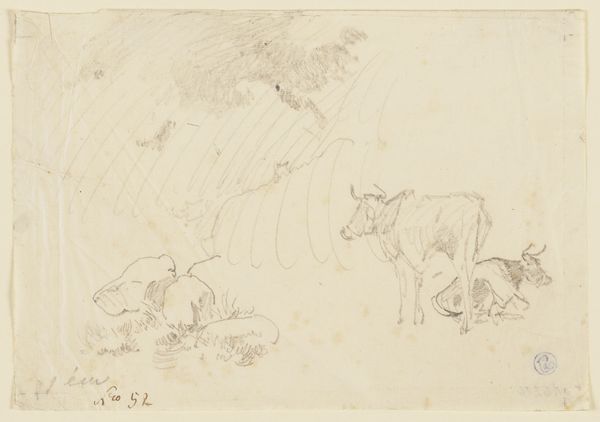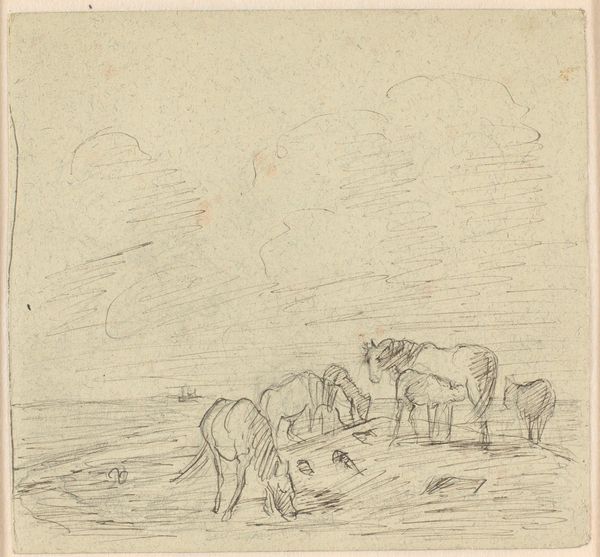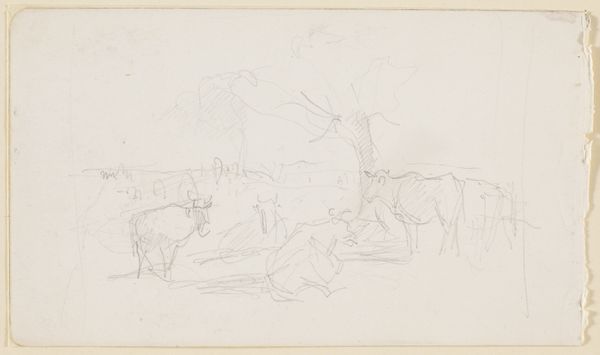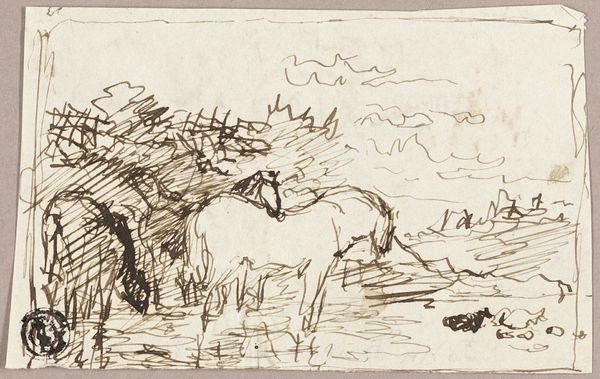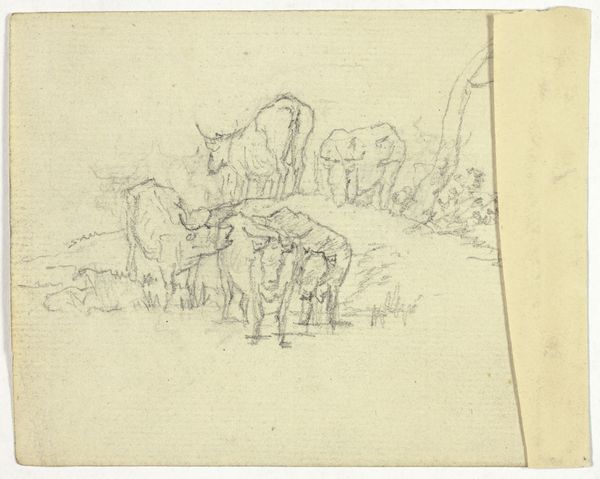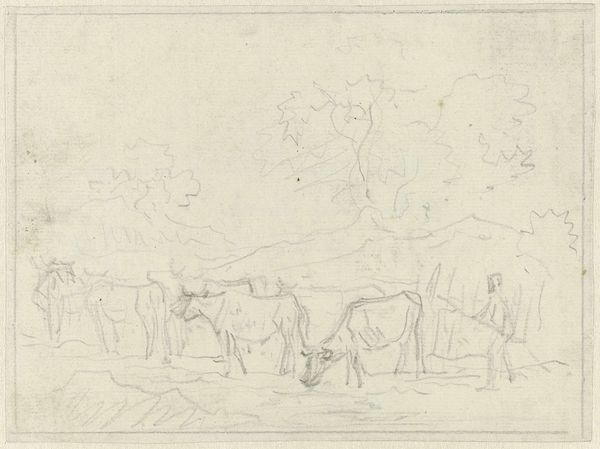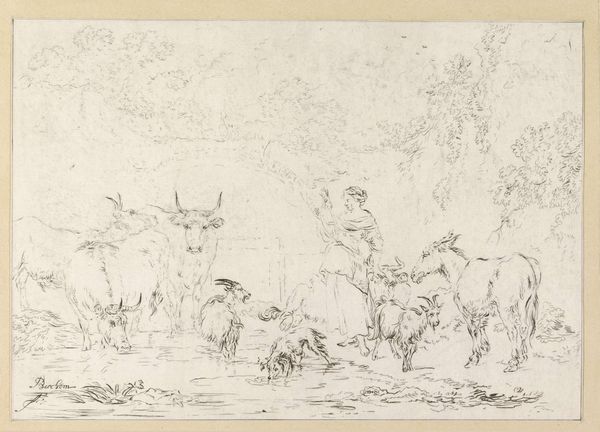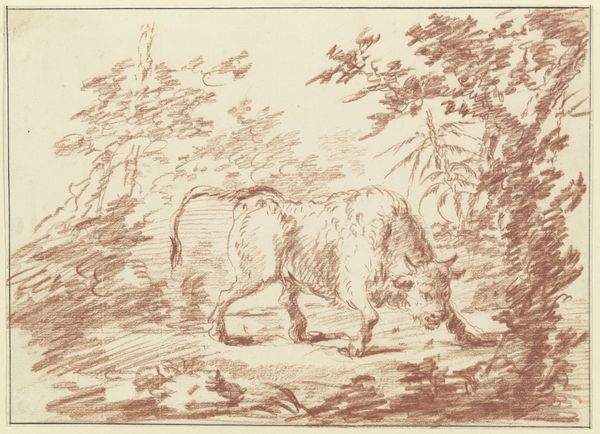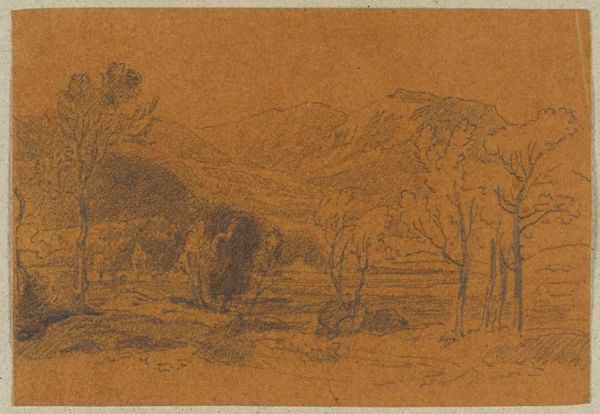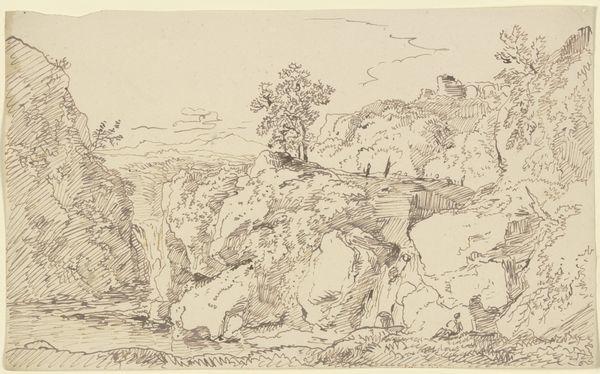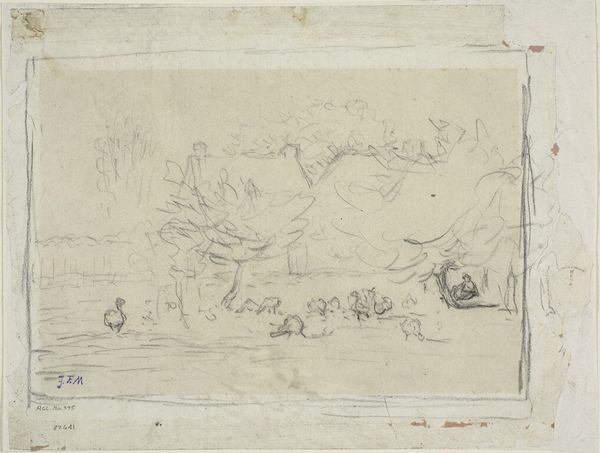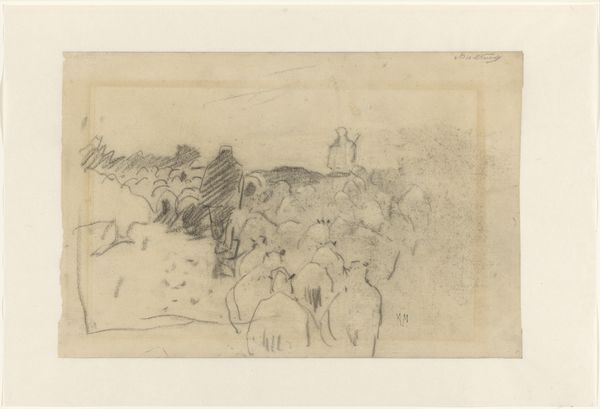
drawing, pencil
#
drawing
#
impressionism
#
pencil sketch
#
landscape
#
pencil
#
realism
Dimensions: height 285 mm, width 201 mm
Copyright: Rijks Museum: Open Domain
Curator: Jozef Israëls created this pencil drawing, "Landscape with Grazing Cows and Woman with a Cow," sometime between 1834 and 1911. It resides here at the Rijksmuseum. What strikes you first? Editor: There's an immediate quietude that I feel. It's almost ghostly, like a memory captured in faint lines. The pencil lends itself to this fleeting, delicate impression. Curator: Indeed. It is important to remember that pencil as a medium became more easily accessible and affordable during Israëls's lifetime, coinciding with the industrial revolution. This allowed more artists, not just those patronized by the elite, to create landscapes reflecting their interactions with rural life and nature. Editor: It's fascinating to consider how something as simple as the accessibility of a material democratized artistic expression. I wonder about the woman depicted; the implied narrative suggests so much about rural women’s labor and the integral roles they occupied as laborers in that agricultural system. Her life experiences would have differed significantly from those who bought and admired such scenes. Curator: The rapid sketching style reinforces the immediacy. Note how Israëls uses different densities of strokes to suggest depth and form, which gives depth to the landscape, highlighting the work involved in agriculture and labor in a pre-mechanized time. Editor: The loose sketching style also connects it with emerging artistic practices, like impressionism, even though there’s a nod to realism, and maybe this reflects a tension of his time. You get a feel for the atmosphere and see people working the land and existing. It makes you think of the changing roles for rural women too and ideas of class. Curator: Ultimately, the landscape itself isn't merely background; it becomes a character, embodying the lives and labor intertwined within it. Israëls presents an image born out of, and reflecting back upon, changing material conditions. Editor: I now view this landscape not just as an artwork, but also as a document of the artist's time, an elegy and a challenge, a ghost on paper asking about social stratifications of land ownership and agriculture at the moment. Curator: Yes, from a seemingly simple drawing we uncover layers of social and material reflection.
Comments
No comments
Be the first to comment and join the conversation on the ultimate creative platform.
